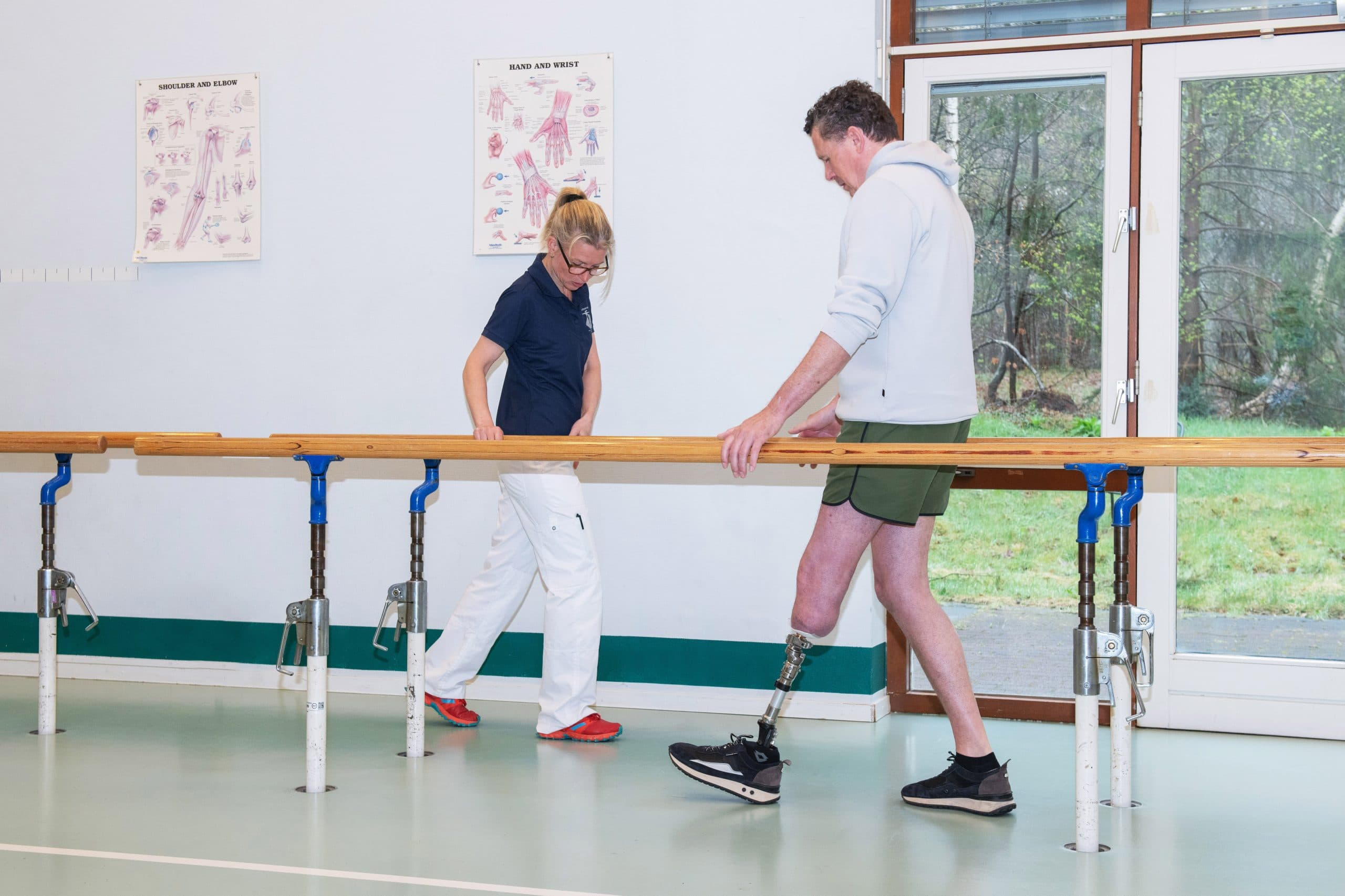
Is an osseointegration (click) prosthesis safe?
For patients with a leg amputation who experience problems wearing a socket prosthesis, there is now a method to anchor the prosthesis to the body. Through the skin, the surgeon can insert an orthopaedic implant directly into the bone of the stump. The artificial bone can be connected to this implant using a click system. This technique is called osseointegration, and the prosthesis is therefore called click prosthesis. Doctors use the term osseointegration prosthesis or bone-anchoring prosthesis. The skin opening through which the implant protrudes is called stoma.
What is the principle of osseointegration surgery?
The osseointegration prosthesis comes from dentistry. In the 1960s, the Swedish scientist Brånemark discovered that bone adheres very well to the surface of a titanium screw. This connection of metal with bone is called osseointegration and this principle is now used by orthopedic surgeons to install hip and knee prostheses in the bone on a large scale. Since the 1990s, this osseointegration technique has been further developed for people with an arm or leg amputation. Unlike a hip or knee prosthesis, the implant protrudes through the skin so that an artificial arm or leg can be clicked onto it. Since 2009, the osseointegration (click) prosthesis has also been used in the Netherlands and is currently experiencing spectacular growth.
Is an osseointegration (click) prosthesis safe?
Yes, this is a safe surgical procedure. Surgeon Dr. Jan Paul Frölke has been providing treatment at Radboudumc Nijmegen since 2009, which is currently one of the largest centers in the world. In addition to providing the treatment, a research department was also set up at Radboud University Medical Center with the aim of learning from this previously innovative treatment and improving the quality of care. Over the years, researchers at Radboud University Medical Center, in collaboration with other major international centers, have investigated the outcomes of the treatment with regard to benefits such as change in function as well as the disadvantages with regard to safety and risks. This has led to many international publications and several completed dissertations, with Radboud University Medical Center being seen as one of the internationally leading centers in the scientific field.
The thorough research conducted over the years has already led to adjustments to the treatment with regard to implants used, surgical technique, and rehabilitation protocols, which has led to the results of the treatment having improved significantly in recent years.
What are the advantages of an osseointegration (click) prosthesis?
The advantages of the osseointegration (click) prosthesis compared to the socket prosthesis appear to be significant after one year, but this improvement also continues after two and five years. Demonstrated potential benefits include: increase in prosthetic wear time, increase in walking distance, decrease in energy expenditure when walking. Other benefits include the elimination of socket-related complaints such as problems with the skin or the fit of a socket prosthesis. Furthermore, patients indicate that they experience a more stable situation with their prosthesis, and therefore dare more. Patients also indicate that they can feel what kind of surface they are standing on, because the vibrations that occur when walking pass through the bone via the prosthesis. This phenomenon is called osseoperception (feeling through the bone), and can give the sensation of regaining the feeling of your own leg. It has also been seen over the years that there has been an increase in muscle volume and quality of the bone around the implant.
All in all, the above benefits ensure increased prosthesis use, increased mobility, and increased quality of life.
The above benefits of osseointegration treatment are particularly evident (and also studied) in patients who experience problems with a socket prosthesis, which result in reduced satisfaction and mobility. Patients who cannot use a socket prosthesis and are therefore wheelchair bound can significantly improve their situation.
What are the risks of an osseointegration (click) prosthesis?
Every operation can be associated with risks or complications (undesirable outcomes), including very established operations such as an artificial hip or knee. The research team from Radboud university medical center is closely monitoring all patients who have undergone the treatment since 2009. Initially there were concerns about the fixation of the implant in the bone, but this has proven to be unfounded, especially with the current type of implants. Deep infections with loosening of the implant are also rare (less than 3%). The current focus of safety research is mainly on soft tissue problems (soft tissues, stoma), as superficial stoma infections or stoma irritations appear to be the most common, especially in smokers and people with high body weight. The stoma complaints are usually easy to treat and are often temporary. Due to recently developed new surgical techniques for creating the stoma, stoma problems are rare and the complaints are fewer.
Potential problems that may arise in the years after treatment are (from most to least frequent):
- Infections or irritations of the stoma (decreasing trend over the years, <25% per year, depending on level)
- Prodefects of the parts of the artificial leg (connector, knee, foot)
- Bone fracture around or above the implant (6%)
- Implant loosening or rupture (<2%)
- Deep infection of the implant (1-3%)
